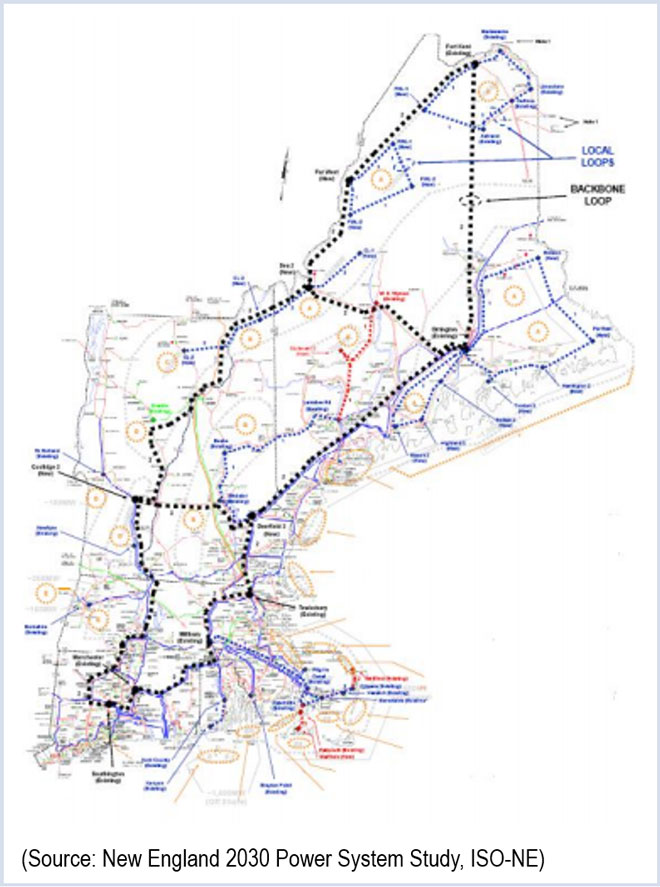By William Opalka
Increased use of renewable energy will depress energy prices, increase capacity prices and lead to early retirement of some baseload plants, according to a discussion paper by ISO-NE.
The RTO said renewables’ low operating costs, combined with state and federal subsidies, reduce the energy market clearing prices, requiring competing traditional resources to make up that shortfall in the capacity market.
“State subsidies for renewable resources will put downward pressure on energy market prices, but this action is not without consequences: it will put upward pressure on prices in the capacity market. The capacity market will help balance the revenue needs for resources as the energy market provides fewer opportunities for resources to recover their fixed costs,” the paper says.
ISO-NE was asked by stakeholders to assess the impact of renewables on baseload generation following the retirement of the Vermont Yankee nuclear plant and other resources. (See Vermont Yankee Retirement Leaves ISO-NE More Dependent on Gas.)
Wind Growth
In 2014, the region’s 800 MW of wind power produced nearly 1% of its electricity. Solar penetration had reached 900 MW at that time, with projections of nearly 2,500 MW by 2024.
Developers have proposed 4,000 MW of additional wind power, with studies suggesting 12,000 MW of onshore and offshore wind could supply a quarter of the six states’ electricity needs.
Increased renewables are expected to impact technology choices, even as the region continues its inexorable march to natural gas, which accounts for about half of New England’s power generation. “That might mean a shift from gas-fired combined cycles toward gas-fired peaking resources,” the report said.
A decrease in energy revenues may cause combined-cycle generators — which expect to earn double the energy and ancillary market revenue of a combustion turbine — to become less competitive. At the same time, more gas peakers will be needed to provide additional reserves as the penetration of intermittent renewables grows.
Baseload Coal and Nuclear
The report said renewables will put the most pressure on baseload coal and nuclear units, noting that Entergy cited low energy market revenues in closing Vermont Yankee.
“With the expected increased penetration of renewable resources, more such retirements should be expected in the future. For example, at current energy and capacity prices, nuclear units might earn almost 10 times more revenue from the energy market than they earn from the capacity market. Modest changes in energy market revenues could have large impacts on the bottom line of a nuclear unit or baseload coal unit. This may be especially true for nuclear units, which have very high fixed operating costs and typically operate at very high capacity factors.”
No Changes Recommended
Nevertheless, ISO-NE said it does not believe its market rules need to be changed to accommodate these developments. It previously noted that higher capacity prices in recent auctions attracted new generation resources into the region. (See Prices up One-Third in ISO-NE Capacity Auction.)
“In the medium- to long-term, the capacity market will enable the region to achieve necessary levels of resource adequacy and resource performance while transitioning toward a system with greater levels of renewable resources,” the report concludes.


